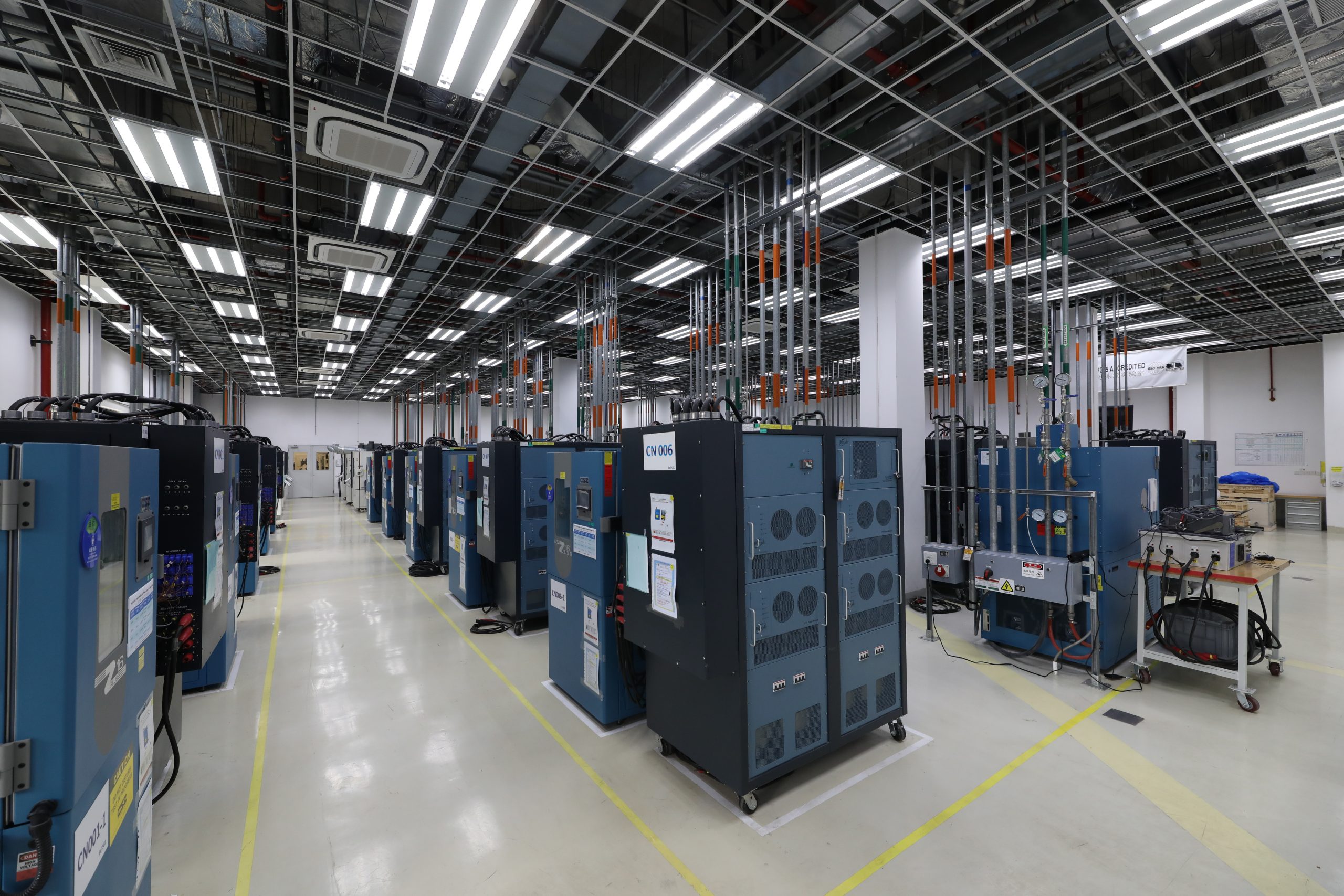On August 21st, we were invited to visit General Motors’ battery laboratory and production factory in China.
As an automaker, General Motors doesn’t directly produce battery cells. Instead, it collaborates with LG for cell development, and the main responsibility of the Chinese battery laboratory is to provide safety tests for the batteries.
The production factory mainly consists of module workshops, as LG provides the battery cells, and General Motors is responsible for the final module production.
Battery Laboratory
According to SAIC-GM, the safety of the power battery is of paramount importance for the safety of electric vehicles. Although it cooperates with LG for power battery development, the battery safety is not taken lightly, and relying solely on suppliers for battery safety is not enough.
General Motors has independent battery laboratories in the United States and China, and has established its own trial production line for prototype development and experimental certification.
Similar to the international practices, SAIC-GM conducts experiments and tests on battery temperature, decay and performance, and then optimizes battery design based on data.
However, there is an interesting validation procedure, which is to conduct a low and high temperature endurance test on every battery that is going to be launched on the market. This involves placing the prepared battery pack in a testing workshop and conducting cycle tests between cold and hot temperatures. The lowest test temperature can reach -40°C and the highest temperature can reach 85°C. The entire validation process can last for 5-6 months.
Currently, the Chinese laboratory and the North American laboratory complement each other, as some of the more complex tests need to be conducted in North America.
Battery Pack Production Factory
This factory is the second global battery assembly factory of General Motors, mainly specializing in the design, development, testing and production of battery systems.
It is actually the overall preparation from battery cells to pack. The battery supplier provides the designed battery cells to the automaker, and the automaker designs a suitable pack according to the vehicle model requirements.
Although battery cell production is not involved in this process, the production of the pack still requires very high technological accuracy. The entire manufacturing process of General Motors’ factory is similar to that of other in-house battery pack manufacturers.
But there are a few points that left a deep impression on me.
High Technological Precision
This is reflected in the stacking of the battery cells and the assembly of battery modules.
General Motors’ cell stack is composed of a cell framework, two soft pack cells, a thermal insulation pad, and a built-in water cooling plate. When these components are assembled together, a single-cell module is formed. The battery module is then composed of these single-cell modules. For example, the battery pack of the Buick Velite 7 uses 5 battery modules.
Therefore, if the arrangement is not neat, it can cause problems such as short circuit when compressed into a module.The precision of loading, unloading, and handling of the production robots in SAIC-GM can be controlled within 0.1mm.
Ultrasonic Ear Welding
After assembling individual battery cells into larger battery modules, the battery modules still do not form an electrical circuit. Only by welding the positive and negative electrode tabs of the battery can the battery modules form a circuit.
The key lies in the welding process. Generally, the laser welding process is used, but laser welding burns the metal pieces to make the electrode tabs adhere together. The disadvantage of this method is that the electrode tabs are made of different materials, and the cooling process after welding will cause other materials to form on the surface, increasing electrical resistance and producing welding slag.
If the welding slag is not cleaned, there will be a great risk of safety for the battery.
Ultrasonic welding generates temperature through ultrasonic vibration to soften the metal, approaching the melting point but never reaching it. This welding process will not cause any electrochemical reaction changes in the metal.
In order to ensure the electrochemical consistency inside the power battery, SAIC-GM uses high-demand ultrasonic welding technology.
From a strategic perspective, General Motors is accelerating its electrification pace. In addition to the above laboratory, SAIC-GM is also building a laboratory that can be used for more complex testing. By then, there will be two battery laboratories in China, complementing each other to ensure the verification of the battery.
Buick’s first pure electric SUV, VELITE 7, has already been launched in the Chinese market. SAIC-GM plans to launch 10 new energy models in China by the end of this year. By 2023, the total number of SAIC-GM’s new energy models on the Chinese market will reach 20. By 2025, all models under the three major brands of Buick, Chevrolet, and Cadillac will be electrified.
Therefore, battery safety is the foundation for achieving all goals.
General Motors has released a new generation of electric platform BEV 3, which will also cover the full range of products of all brands in the future. The development of electric vehicles will continue to progress rapidly each year. Don’t worry about too much, make the voice louder, spend the money, and deploy and try the technology quickly.

This article is a translation by ChatGPT of a Chinese report from 42HOW. If you have any questions about it, please email bd@42how.com.
